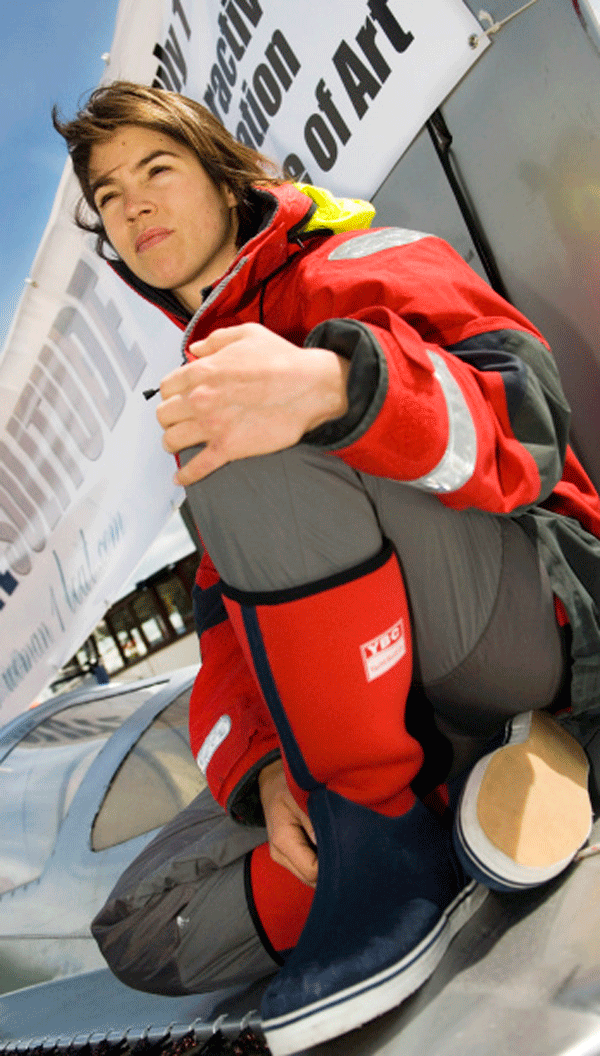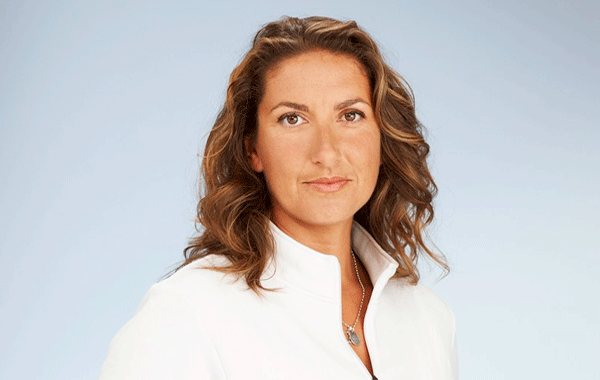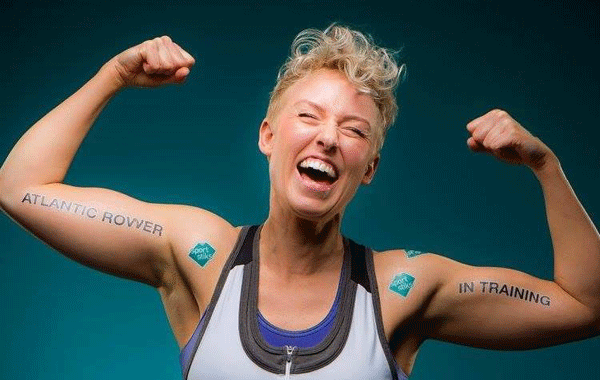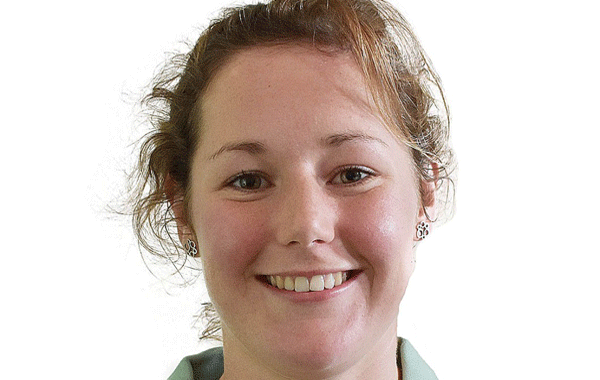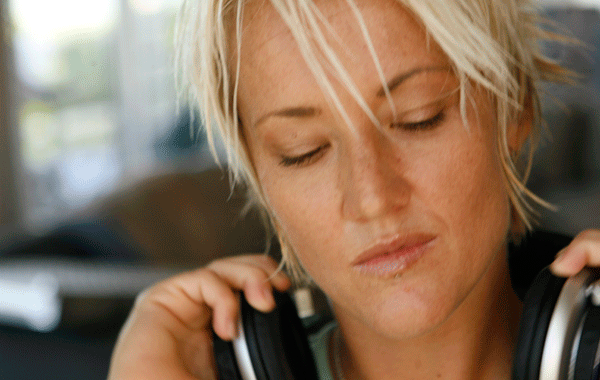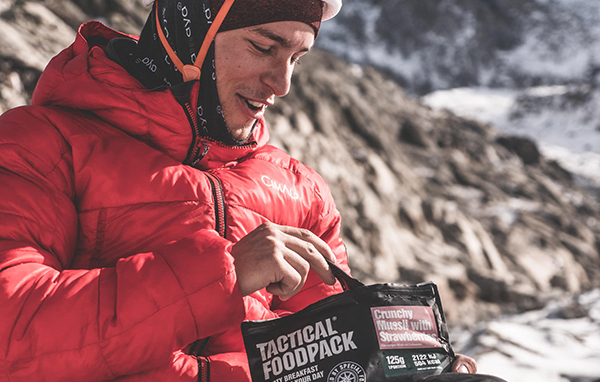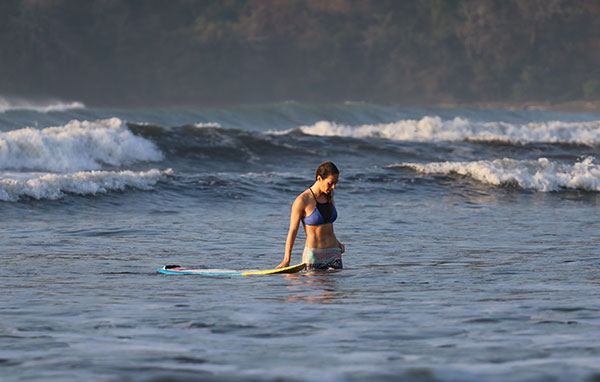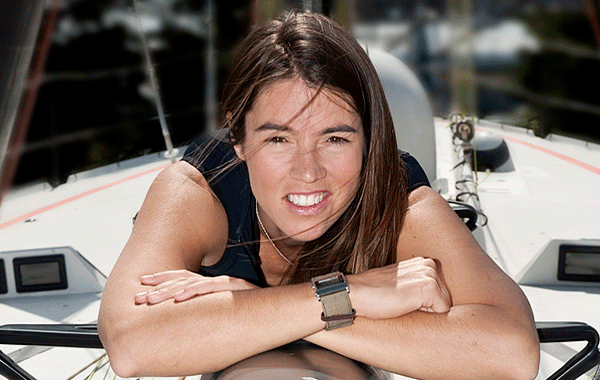
Lia Ditton is a professional sailor and writer. photo Guy Bell
LIA DITTON is a professional sailor and writer who is bound to inspire anyone passionate about pushing the boundaries in sport.
She is the only woman to complete the OSTAR 2005 single-handed transatlantic race, the experience formed the basis of Lia’s 2006 installation, Absolute Solitude: One Woman, One Boat in which Lia lived on her boat next to the Tate Britain Gallery for 28 days – the same number of days as it took her to sail to America.
A licensed captain, Lia has since come 2nd in the Route du Rhum, France’s most-prestigious, single-handed transatlantic race; captained the boat from the film Waterworld starring Kevin Costner; become the 53rd woman to row the Atlantic and the 64th woman to row any ocean, and project managed the largest solar-powered boat in the world.
Lia’s book, 50 Water Adventures To Do Before You Die! is available from Amazon as well as many other online outlets. To find out more about her adventures, life and the extraordinary challenge she’s set herself for 2018 visit www.liaditton.co.uk.

Lia pictured on the Dream Maker. photo liaditton.co.uk
Have you always been a sporty person and if so what were some of your early sporting achievements?
My father walked my brother and me to school across the fields and so I learned early on that if you walked for long enough eventually you would get where you wanted to go. After school, I would shoot a ball into a hoop while waiting for my mother to collect us. I wasn’t necessarily driven to improve, but that happened anyway. I became the shooter on the school netball team and we did very well.
I cycled to and from high school. On exam days I felt my performance was better when I cycled there. My bike was a fold-up bike my father bought second-hand out of the classified section in the newspaper. The wheels were small and fat and at first I had to walk the bike up the hill.
I didn’t really find my sport until my 20’s.
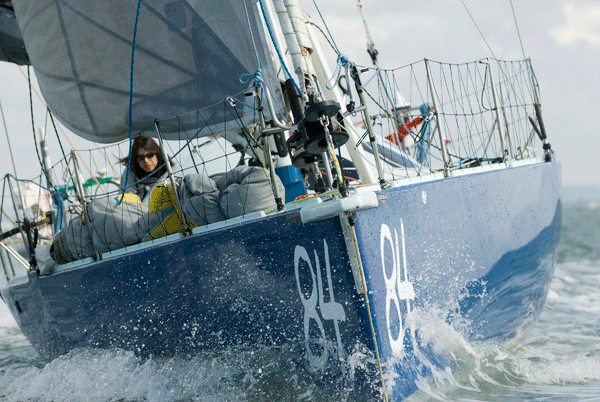
Lia has faced all kinds of weather conditions during her adventures at sea. photo Guy Bell
How did you get your passion for the ocean and how did it lead you to become an adventurer?
It was the other way round – my curiosity led me to the ocean. I loved the beach as a child what child doesn’t – but it wasn’t until the year 2000 when I was backpacking in Asia that the ocean really burst into my life. I was no stranger to boats. My parents had a 19ft sailboat and from the age of eight our summer holidays were spent onboard the family boat. Nineteen feet is not a lot of boat. My older brother refused to get out of his bunk. He had no interest in sailing. This left my mother and me, or rather me watching my mother being seasick. My poor mother! She would struggle for a week or two before finding her sea legs. So I became my father’s sailing assistant. While I had little understanding of what to pull when, I was dutiful and read the pilot books to navigate us to the next marina as fast as possible. By the age of 14, I swore I would never set foot on a sailboat again!
In Thailand I stumbled on the Kings Cup Yacht regatta and volunteered. Afterwards there were boats looking for crew to return to Australia, New Zealand, Cape Town and Europe. This was an adventure my 21-year old self could not pass up! By the time we arrived in Marmaris, Turkey, my life had changed irrevocably. How could I return to London and life as an impoverished artist, when there was so much beauty in the world to be seen.

Lia loves to row naked when she has the opportunity as this cheeky shot proves. photo liaditton.co.uk
Tell us about some of the races you’ve had on the ocean and some of the phenomenal success that has come with that?
The captain of the boat we sailed to Turkey gave me a book called The Wanderer by Sterling Haydn. “If you are contemplating a voyage and you have the means, abandon the venture until your fortunes change. Only then will you know what the sea is all about” – as a 21-year old with no financial means and big adventure lust, Haydn’s words were music to my ears. I was immediately drawn to where his adventures began: New England and Newport, Rhode Island to my delight was a mecca for boats. Unbridled enthusiasm (and 6,000 miles of ocean experience) got me a ride on the first boat or two; from there I joined a crew across the Atlantic on a 50ft wooden trimaran called Moxie.
On Moxie we went through eight storms in 12 days, cracked the boat and got caught in the tail end of hurricane Kyle. The experience should have been terrifying, but I knew little about multihulls and didn’t realise the danger we were in. We were delivering the boat to England for the start of a race called the OSTAR (Original Singlehanded Trans Atlantic Race), but diverted to Portugal. The boat never went on to do the OSTAR and there was something undone about that for me. I was so captivated by this new world of ocean racing (we made a pit stop for repairs in the Azores and crossed paths with the Route du Rhum race coming the other way) that I not only went on to do the OSTAR but also the Route du Rhum. I was the youngest competitor and only woman to finish the OSTAR race of 2005. Finishing was the real prize. Only 19 of the 49 competitors reached the other side, proof of skill but mostly tenacity and grit.
In the Route du Rhum, France’s most prestigious single-handed transatlantic race, I came second in my class. The reputation of the Route du Rhum is almost as intimidating as the race itself. Several million spectators turn up for the start, with live television coverage for those at home. You would think it was NASCAR. The race itself is a downwind sleigh-ride across the North Atlantic in winter. Many boats don’t make it out of the Bay of Biscay.
After the Route du Rhum, I returned to sailing the boats I had come to love: multihulls and captained the trimaran from the movie ‘Waterworld’ with Kevin Costner. We transformed the boat into a 30kt racing machine in an attempt to break records, like the Transpac race to Hawaii and San Diego to Puerto Vallarta, Mexico. My last job was as boat captain of the largest solar powered vessel in the world, ‘PlanetSolar,’ which was the world first to make a circumnavigation under solar power alone.
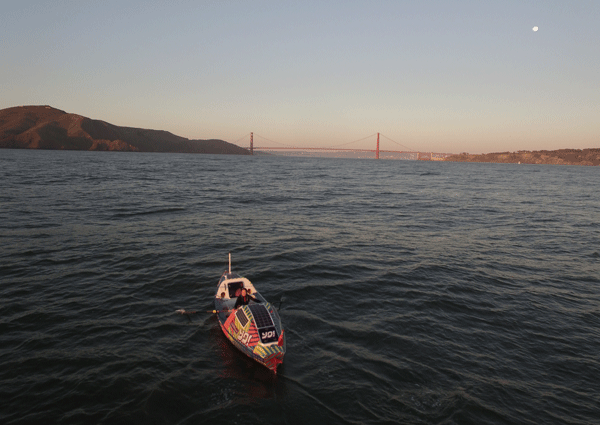
Lia is taking on a challenge next year to solo row across the Pacific Ocean. photo Eddie Codel
What gave you the idea to row from Japan to San Francisco in 2018 and what is the row in aid of?
I knew within hours of arriving in Antigua, after rowing the Atlantic that I would row an ocean again. It was a matter of which ocean and when. I felt I had communed with my inner mermaid. I loved the proximity to the water, how the oars were like an extension of my arms. I could feel the ocean, feel the texture of the water, which changed according to the conditions. When it was windy, the water became aerated, light and fluffy. It was like rowing through silk and I would row with my eyes closed. Whales surfaced to roll sideways and look me in the eye; dolphins hung out for hours splashing around the boat – it was like I had become part of the ocean. I never knew how many fish were in the boat’s shadow, until I jumped in once a week to scrape barnacles off the bottom. I rowed naked. I felt wild. I felt free.
Two months later I met Chris Martin, who had just completed a 189-day row from Japan to San Francisco. ‘189 days?’ I said, aghast. I couldn’t help thinking, did you get lost? I began researching why it might have taken Chris and his rowing partner so long. At that time some 15 attempts had been made to row this distance solo. Only two had succeeded. Both were men.
From research, I learned that the North Pacific Ocean is dissected into an east and west basin by an underwater mountain range called the Emperor Seamount, which continues up from Hawaii in a north-westerly direction. Combine the effect of the warm Kuroshio Current (similar in velocity to the Gulf Stream) and you have a minefield of swirling currents. Crossing the North Pacific in a rowboat, I concluded, was the ultimate navigational challenge – a real life game of snakes and ladders.
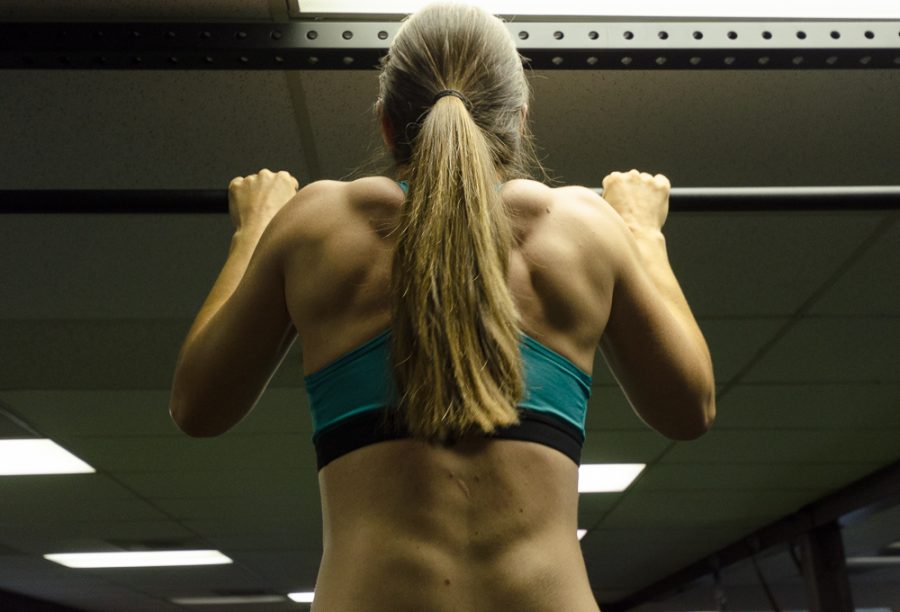
Lia is having to train harder than ever for her rowing challenge next year. photo Jenn Heflin
What is your message to all the women who will be inspired by your ambitious row as well as your previous sporting achievements?
Through empowering myself, I aim to empower others, men and women. My professional experience in the marine industry backs up the 2011 McKinsey report findings, quoted by Sheryl Sandberg in her book Lean In that “men are promoted based on potential, while women are promoted based on past accomplishments.” With strong female role models omnipresent not a rarity, this should change.
Before women can become equals in leadership across all disciplines, women need self-belief. My message to women is a quote from the German poet Goethe: Whatever you believe you can do, begin it. Begin it now.
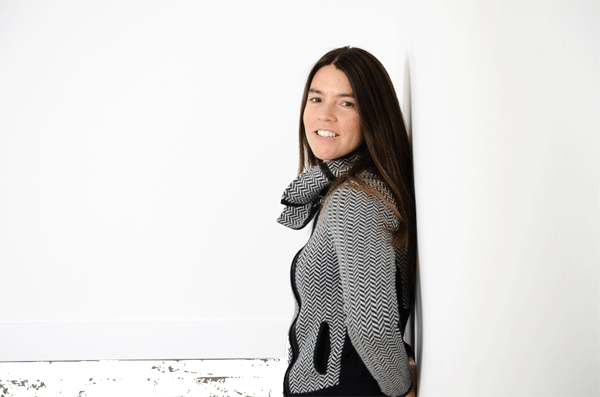
You can find out more about Lia and her sailing adventures at www.liaditton.co.uk
How hard are you training for the row and how do you expect the challenge will affect you physically and mentally?
I wanted to run the project like an Olympic campaign, so I am training full time and have the support of a team of performance professionals.
My gym sessions are specifically for strength and to work on my body’s weaknesses. The rest of my training is either in my boat or on the rowing machine. Training mentally is as important, if not more important considering the amount of time I will spend alone. Every two weeks I spend an hour and a half in a float tank for sensory deprivation training. The Epsom salts help my body rest and recover and the isolation forces me to spend time inside my own mind. I am also working closely with sports psychologist Michael Gervais, whose main client is the Seattle Seahawks NFL team. Mike worked with Felix Baumgartner for the 2.5 years running up to the Red Bull Statos project in which Felix broke the sound barrier in the course of his 24 mile skydive to earth.
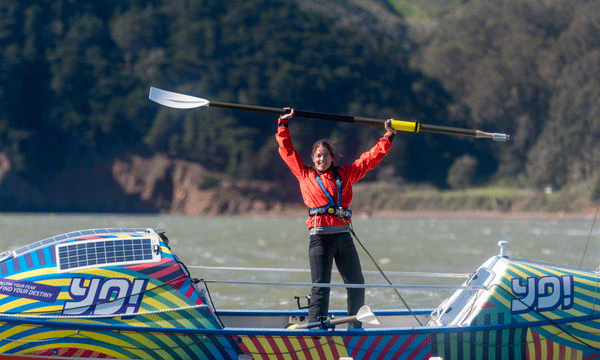
Lia has consistently inspired women around the world and 2018 is set to be her most influential year yet. photo Jenn Heflin
How can are readers get behind you and support you in your challenge?
Support comes in many guises. Potential sponsors care about social media and so I am really grateful for Facebook likes (yorow2018) or a follow on Instagram (@rowliarow) or Twitter (@liaditton).
I worry how I will get through the days when my body hurts and my spirits are low. And I can’t think of anything more motivating to get me out of my bunk, than rowing in the name of 35-50 women who have in turn inspired others.
So I invite you to sponsor a mile for $20 and to nominate an individual who has inspired you. This part of the project has only just got started and will become an incredible human story – mile after mile, an ocean of amazing women we salute.

